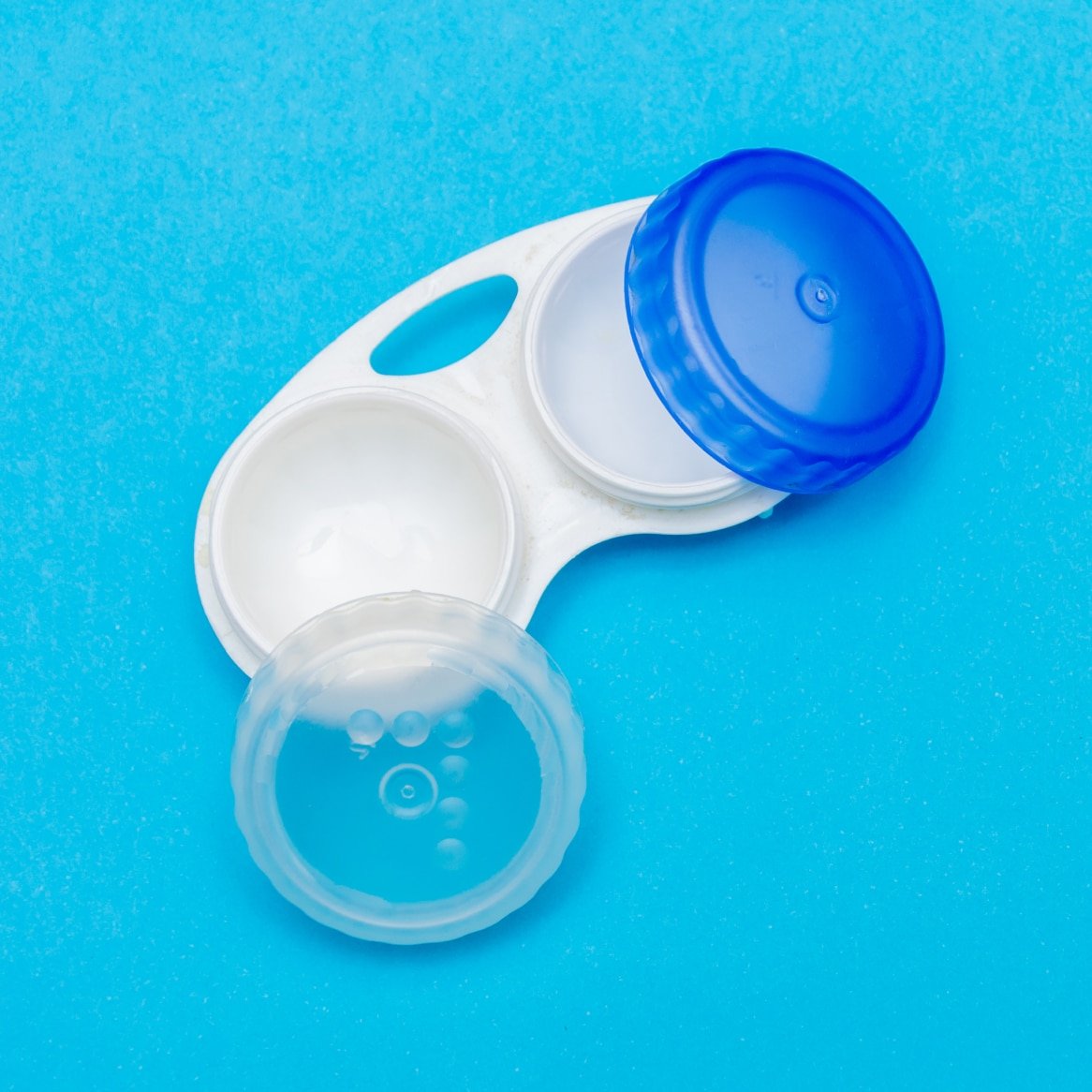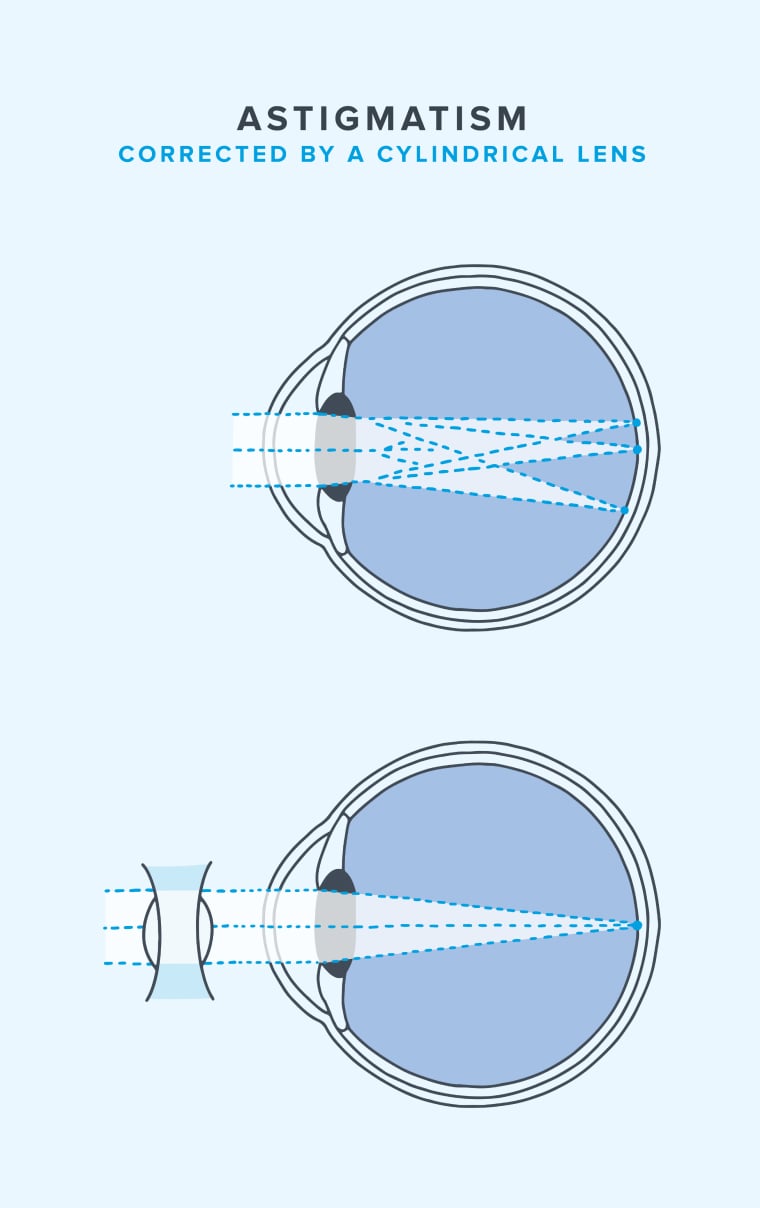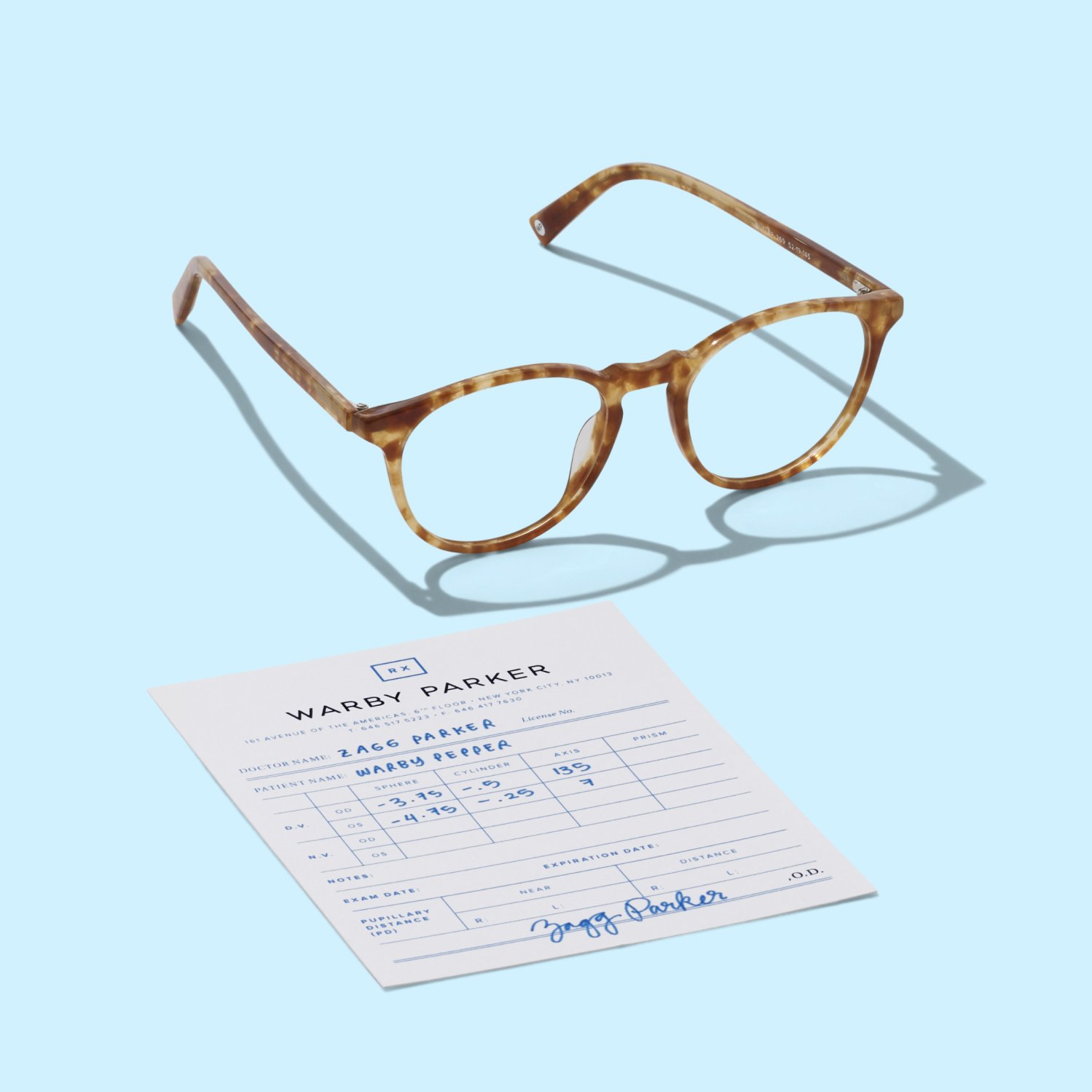Yes, you can definitely wear contacts with astigmatism!
While this news may be relieving, that’s probably not the end of your questions. Understanding what astigmatism is, how it can impact your vision, and the type of contacts you can wear with astigmatism might feel overwhelming. But don’t worry—you’ve come to the right place.
In this guide, we’ll break down some of the most common questions surrounding astigmatism and contacts. Let’s dive right in.
How Is Astigmatism Corrected?
The two most common options for treating astigmatism are glasses and contact lenses. You and your doctor should discuss the best option for you.
Astigmatism occurs when the cornea of the eye, or even sometimes the lens, is irregularly shaped or unevenly curved (like a football). Because of the irregularity, light rays are scattered onto various focal points on the retina, causing blurry or distorted vision, squinting, headaches, eye strain, poor night vision with glare and haloed lights, and other problems.
An eye prescription (whether for contacts or glasses) will correct astigmatism with cylindrical lenses that properly refract light onto a single point on the retina.
Glasses
Glasses for astigmatism have special lenses with varying prescription strengths across them to counteract the irregularly shaped cornea. Each case of astigmatism is different, but glasses lenses can be calibrated to match your specific prescription needs.
Contacts
Contacts designed specifically for those with astigmatism can be specialty contact lenses or soft toric lenses. These contacts are cylindrical lenses that correct vision differently (according to the positioning of your astigmatism) across the lens. For this reason, these lenses must maintain their shape and orientation over the cornea. Specialty contact lenses may be recommended, such as hybrid lenses, rigid gas-permeable lenses, or scleral contacts.
Do Contacts “Fix” Astigmatism?
It’s important to note that prescription glasses and contact lenses won’t permanently repair astigmatism—they can’t change the irregular shape of the cornea. Only surgery can do that. (Consult with your optometrist or ophthalmologist if that’s an avenue you want to try.)
With that said, contacts can drastically improve quality of life by correcting for astigmatism and improving your vision. For many patients, contacts and glasses can go a long way, making measures like surgery unnecessary.
What Kinds of Contact Lenses Can You Wear With Astigmatism?
Although some mild cases of astigmatism may not need treatment, a majority of people with astigmatism will need toric contact lenses. However, with all of the advances made in contact lens technology over the years, there’s a wide range of options today. Those with astigmatism can wear daily, bi-weekly, or monthly contacts across a variety of brands. Your eye doctor will help determine which type is best for you.
We’ll break down the basics of the different types of toric contacts below.
Soft Toric Lenses
Soft toric contact lenses are a popular option for contact wearers with astigmatism for many reasons. Toric lenses used to only be made with rigid materials, but today they can be made with soft lens materials, often making them a top choice for comfort. And daily disposable lenses are an option with soft contacts (in addition to bi-weekly or monthly), which is an added plus for wearers who prefer a fresh pair of lenses each day.
Rigid Gas-Permeable Contact Lenses
Rigid gas-permeable (RGP) contact lenses are also sometimes prescribed for people with astigmatism (usually those with more severe cases). As their name implies, these contact lenses are more rigid than soft lenses, but they can provide incredible clarity, sometimes more so than soft contact lenses depending on the wearer.
RGP lenses consistently hold their shape on the eyes and create a pool of tears over the cornea that helps correct the effects of astigmatism. For new wearers, the material of RGP contacts can take some getting used to.
Scleral Contact Lenses
In rare cases, those with astigmatism might require scleral contact lenses. These types of contacts have a larger surface area than traditional contacts. Scleral contact lenses have edges that rest on the sclera—the white part of the eye.
Before being placed on the eye, the center of a scleral lens is filled with artificial tears. The center sits above the cornea with the liquid, helping to correct astigmatism.
Hybrid Contact Lenses
Depending on the nature of astigmatism, an eye doctor might recommend hybrid lenses. Hybrid lenses are exactly what their name implies—a combination of the “harder” rigid gas-permeable materials and soft contact lens materials. Usually, they have a rigid center that’s surrounded by softer edges.
Can You Wear “Normal” Contact Lenses With Astigmatism?
Traditional, non-toric lenses aren’t usually prescribed for those with astigmatism unless the astigmatism is very mild. Letting astigmatism go uncorrected could impair your vision and even make it worse over time. That’s why, if you have astigmatism—or you think you might have it—it’s important to get your eyes checked to make sure you have the right lens prescription.
Can You Wear Colored Contacts With Astigmatism?
As long as your eye doctor approves it, you can absolutely wear colored contacts with astigmatism. But it’s possible there might not be as many options. The level of correction needed for your astigmatism could limit or exclude some colors.
Are Contacts Better For Astigmatism Than Glasses?
Some wearers do feel that contacts are the best choice for correcting their astigmatism, but others might not. Unlike glasses, contacts cover the entire cornea, leaving no gaps where astigmatism wouldn’t be corrected. But, if your astigmatism is minor, those gaps may not even be noticeable.
Astigmatism or not, wearing contacts versus glasses is based on personal preference. While some people find contacts convenient, others might find them uncomfortable. Many people wear both interchangeably, choosing glasses on some days and contacts on others.
Choosing the Right Contact Lenses for Astigmatism
By now, you hopefully know more about contacts and astigmatism. But your eye doctor should always have the final say on your eye health and vision correction needs. That’s why it’s so important to have regular eye exams.
Each case of astigmatism is different, and not everyone will be able to choose the same contact lenses—and in some cases, contacts might not be recommended. Ask your eye doctor about your options, then shop accordingly.








